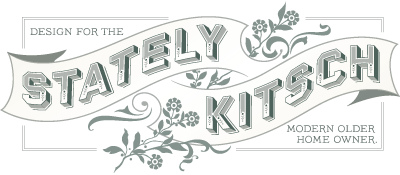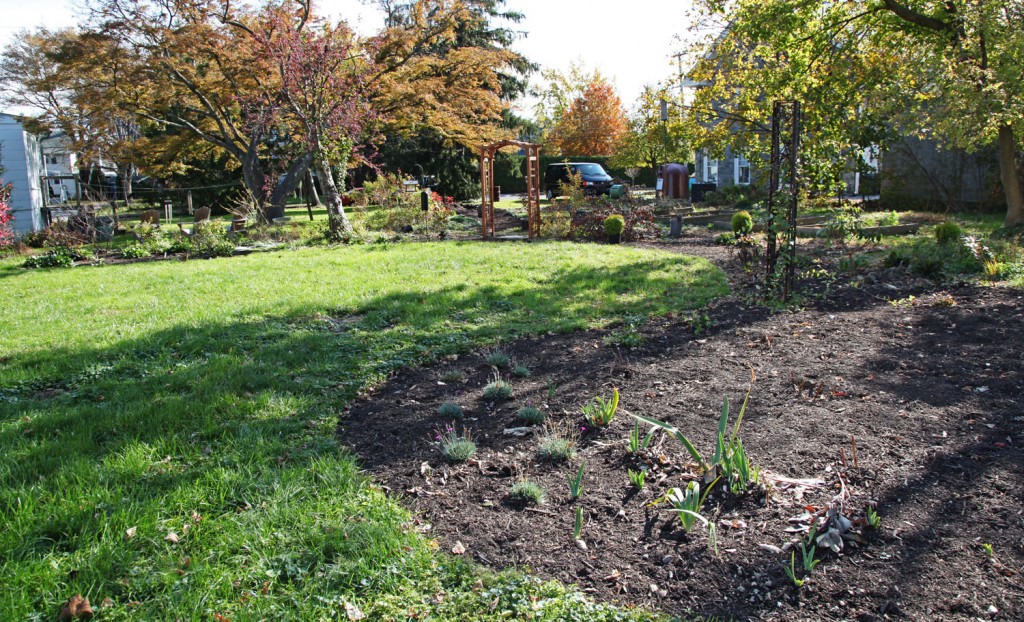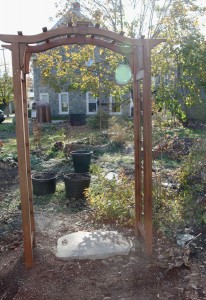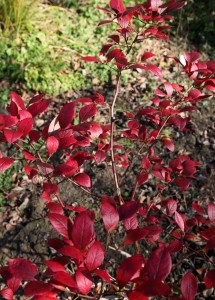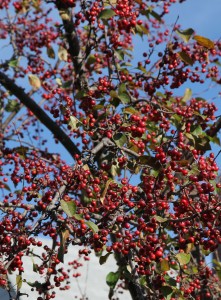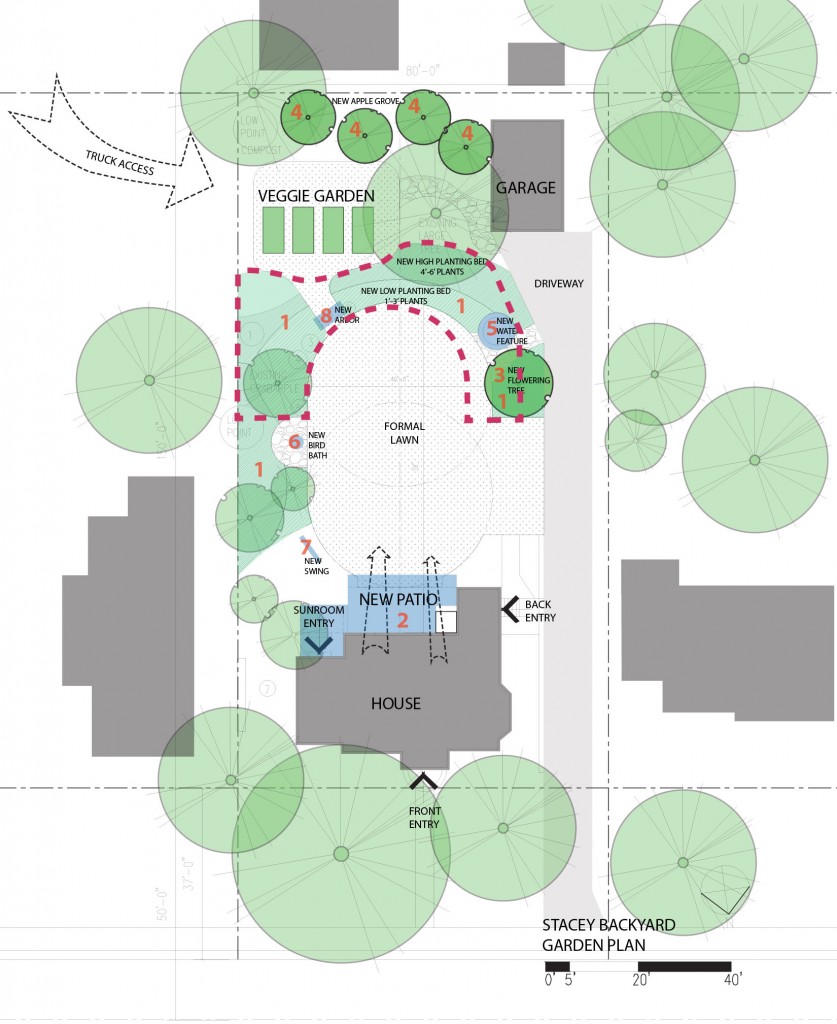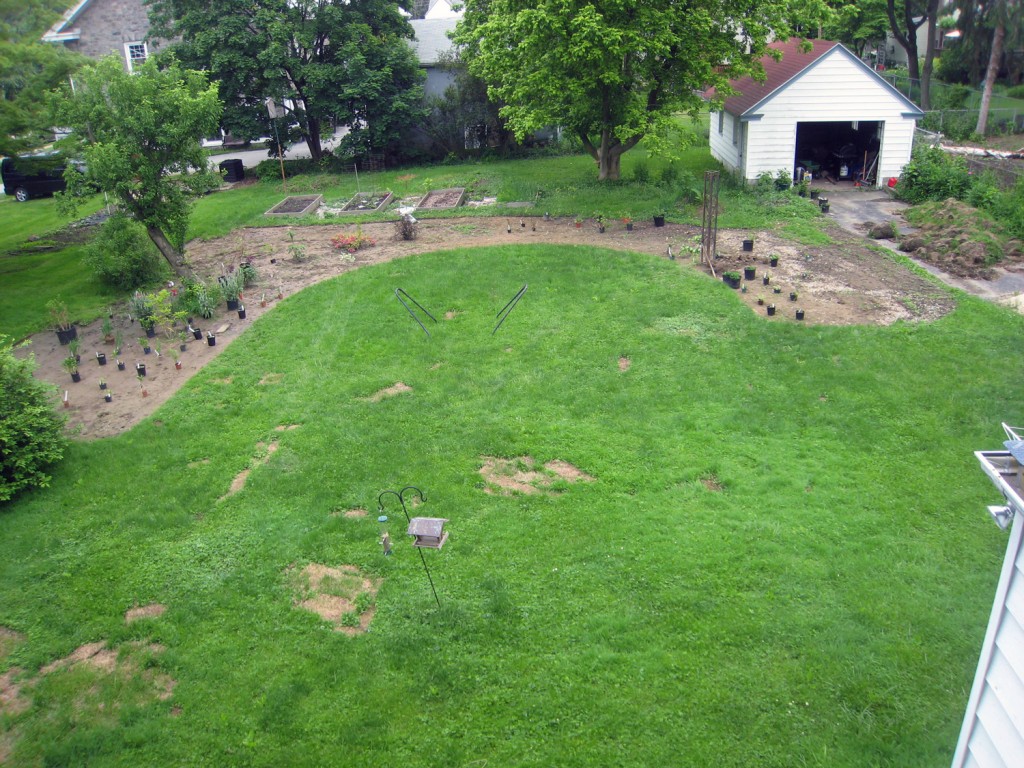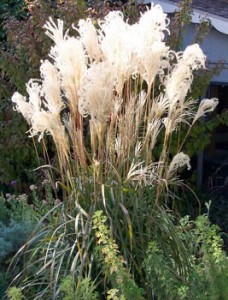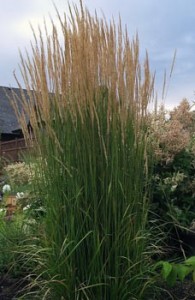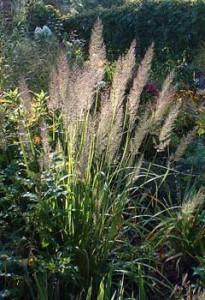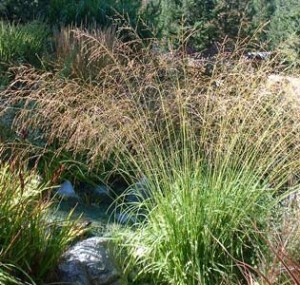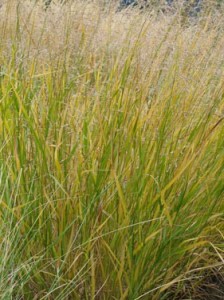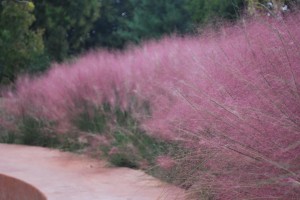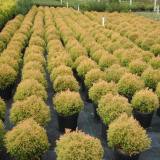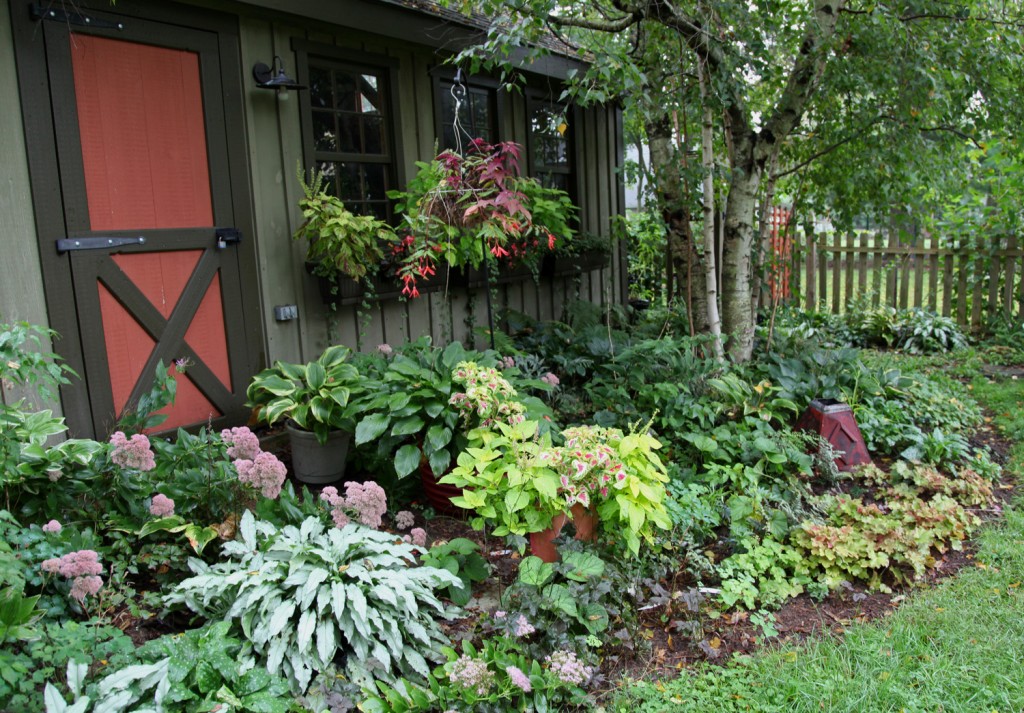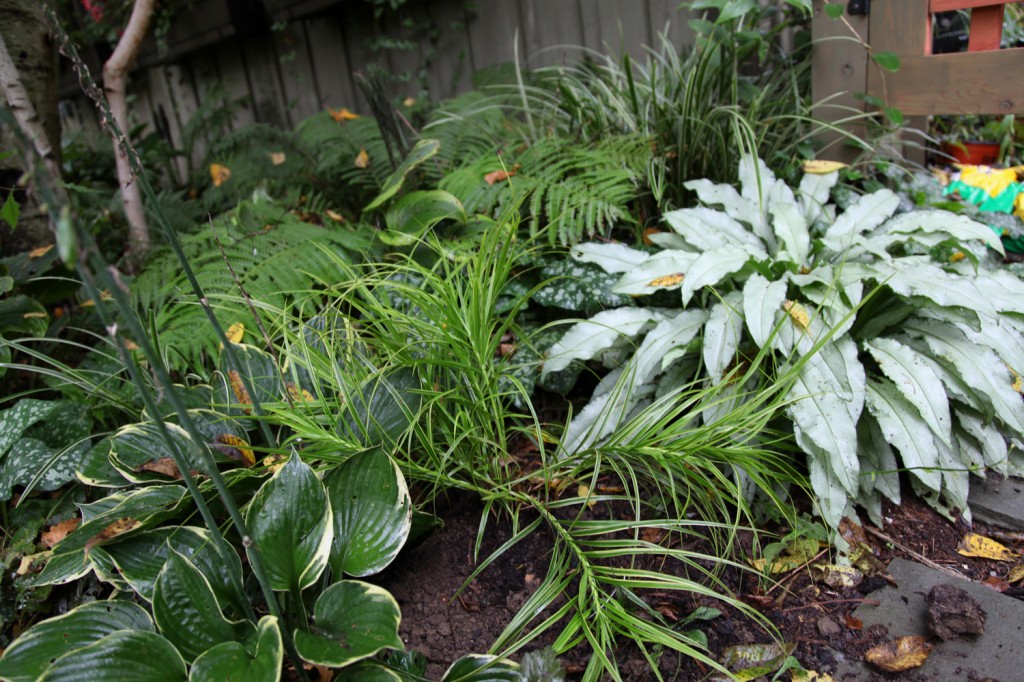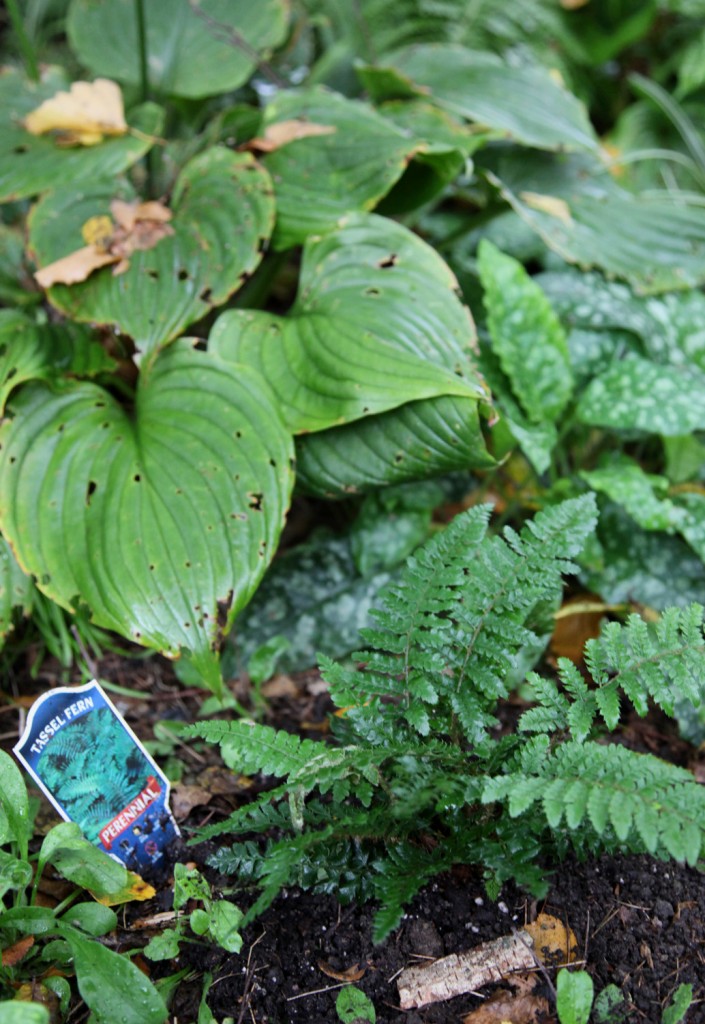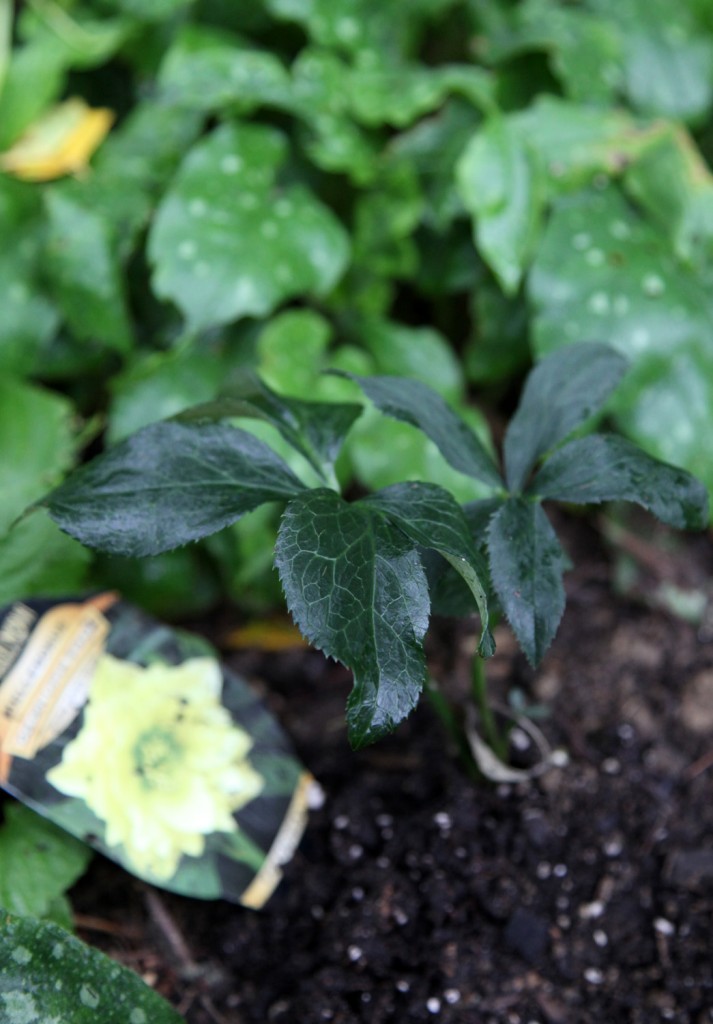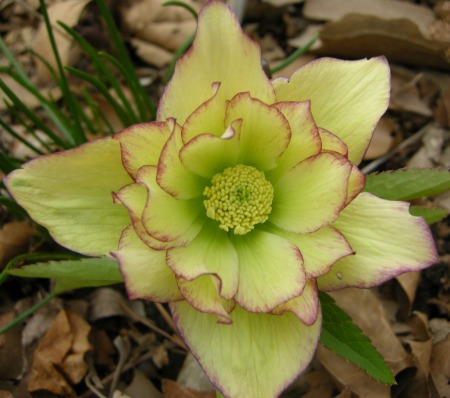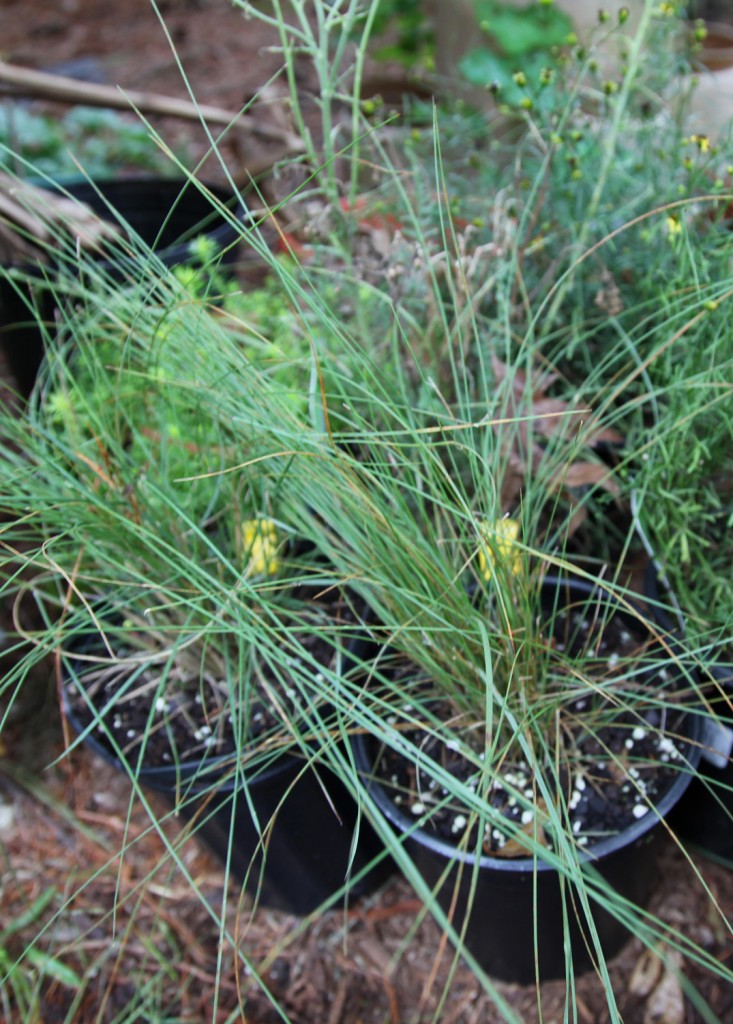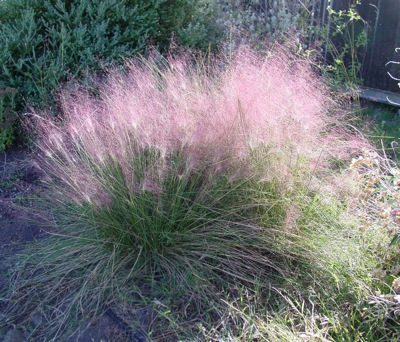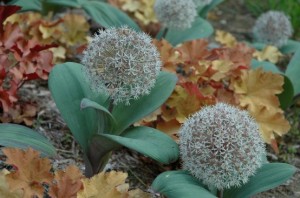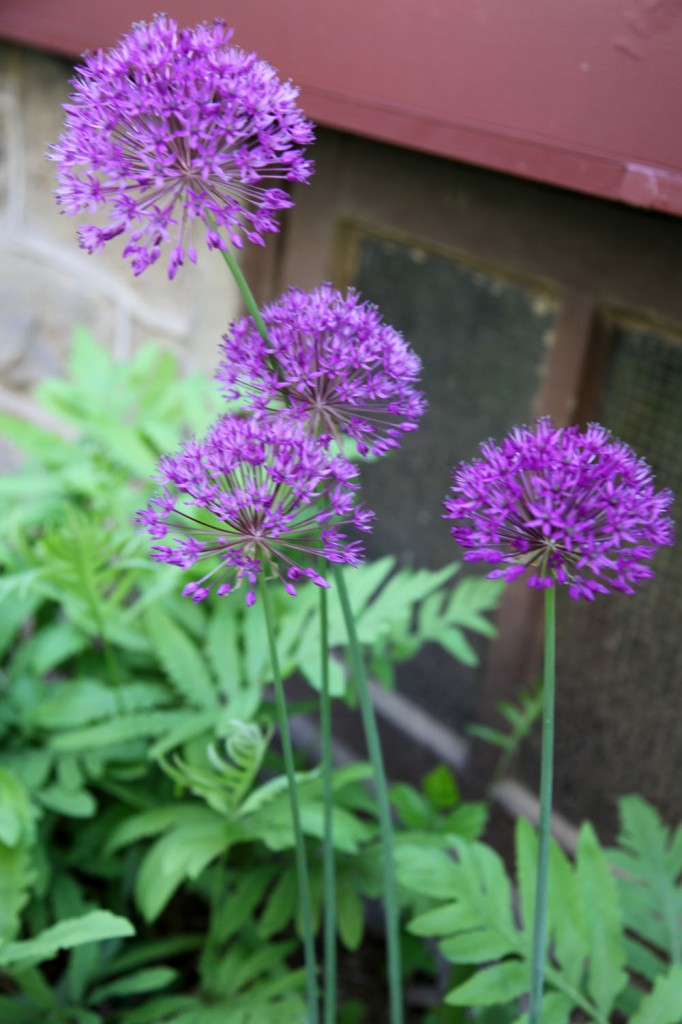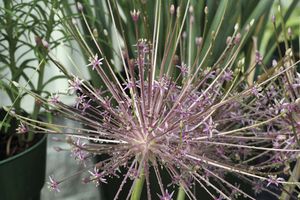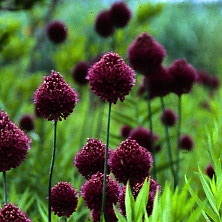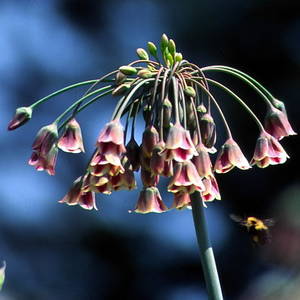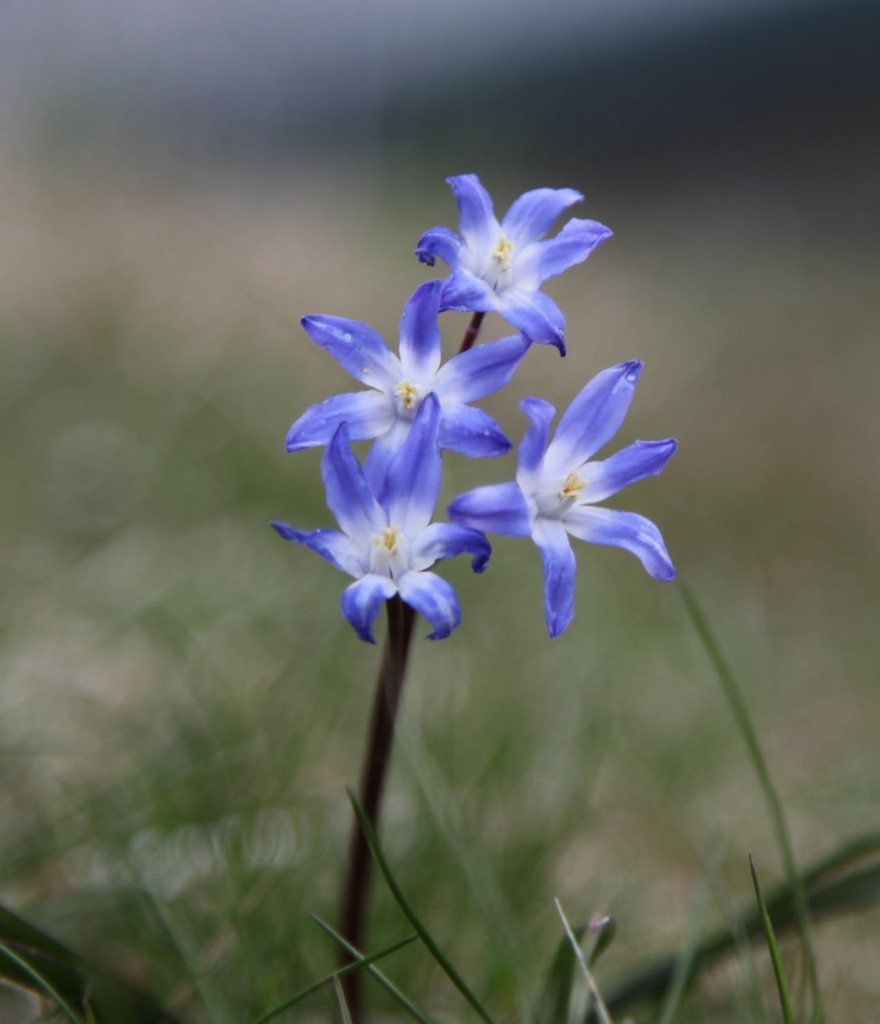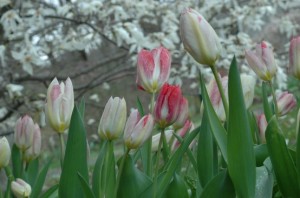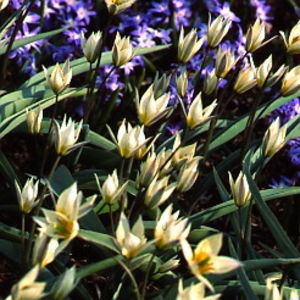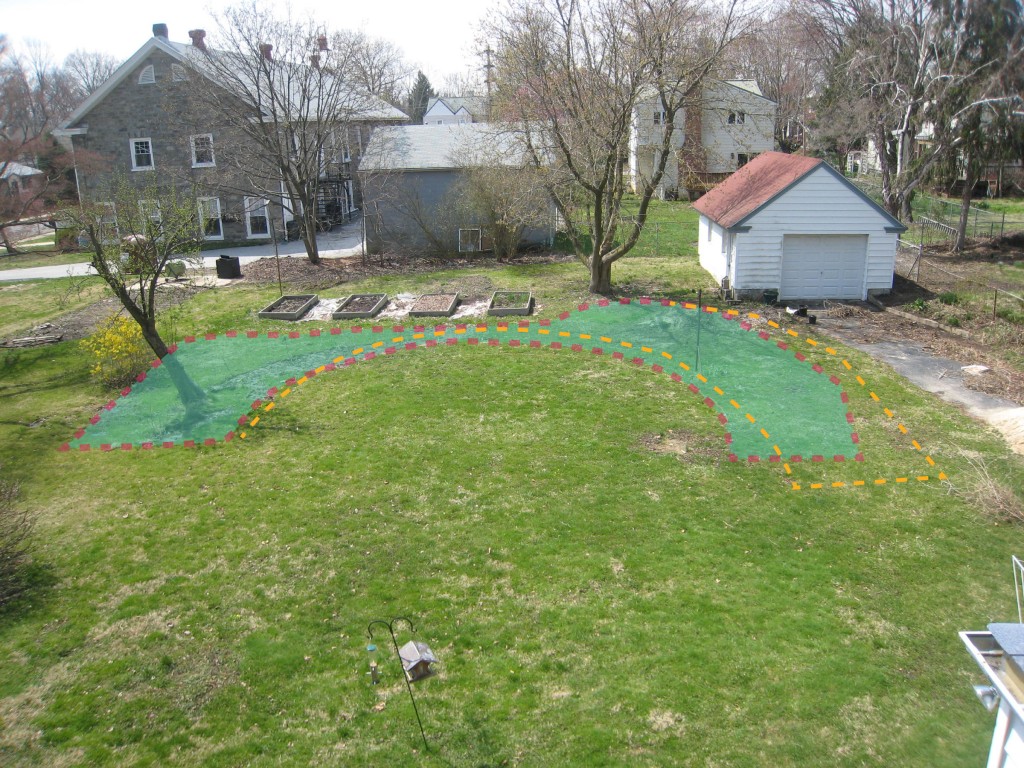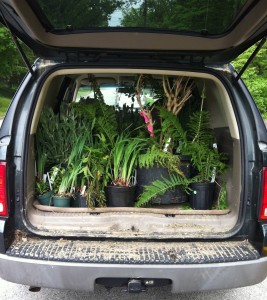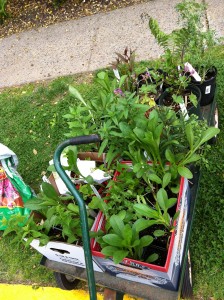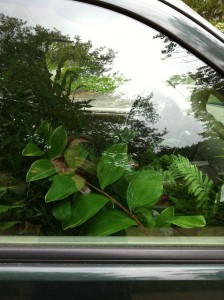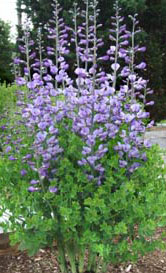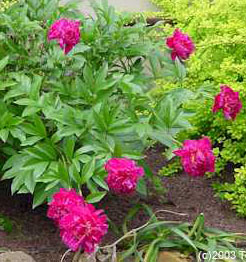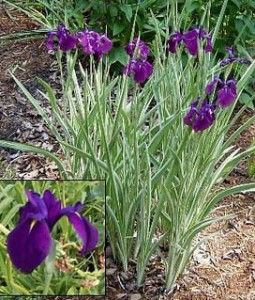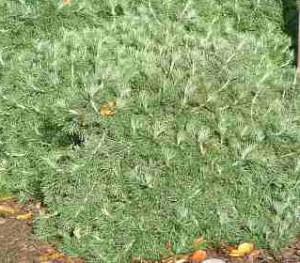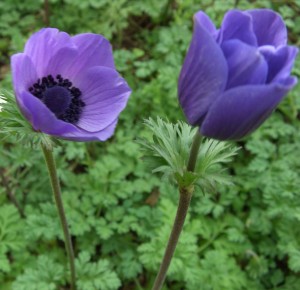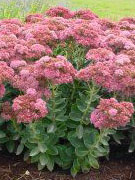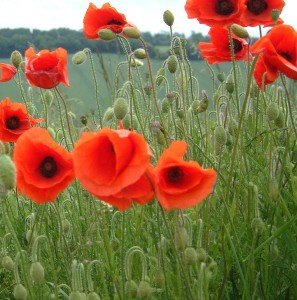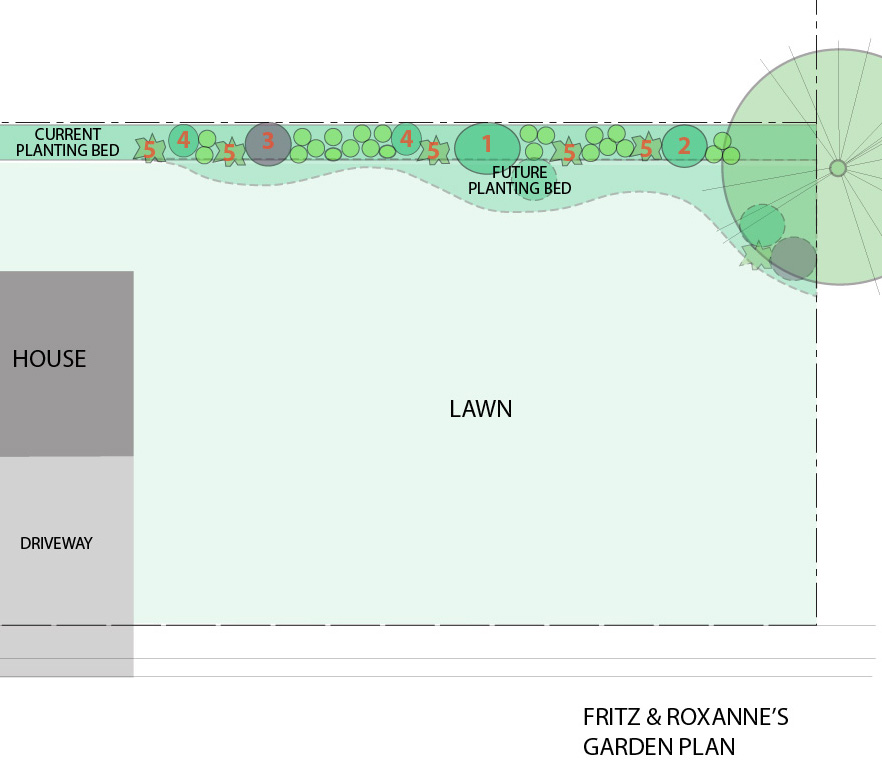
Sketch Garden Plan
Fritz and Roxanne are new homeowners and have been busy taming back the weeds and overgrown plants in their backyard. They would like to start planting some perennials this fall so that next year they can start to enjoy some color in their backyard next year. The planting bed is part sun to part shade and against a large white fence. The current bed is about 2′ wide (although I would suggest over the long term widening to about 4-5′ minimum to give enough room to layer the plants). To get them started here I put together a list of some easy to take care of perennials, shrubs and bulbs. There is also one large existing rose bush in the middle of the bed (see #1).
Specs & Getting Started
Long narrow planting bed against a high white fence. Part Sun to part shade (afternoon shade). They have already cut back the trees and weeds. Here are a few steps I recommend to make the bed ready for plants:
1. If the soil is compacted, I recommend tilling the soil. You can rent different size tillers at Home Depot for half or full day. If the soil has a lot of clay in it I also recommend adding some sand and mushroom soil or compost to give the bed better draining and nutrients.
2. Cover the area with approximately 6 layers of newspaper (wetting as you go to keep them in place). Overlap the pieces by an inch or two to provide a complete cover over the soil. Then mulch over this with about 2-3″ of wood mulch. The newsprint will help keep the weeds at bay and will slowly decompose. By spring most of it will be gone and the mulch will begin to decompose as well. This will help the bed get some initial nutrients.
3. You can start to plant the new plants either before or after step 2. If you put them in after then you simply cut the newsprint in the areas where you are installing plants.
4. In the spring add another inch or two of mulch after the plants have come up to help keep the moisture in the bed and minimize the weeds.
5. Over the long term consider widening the bed, possibly in a curvy pattern to break up the appearance of the long bed.
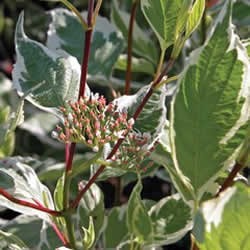
Red Twig Dogwood
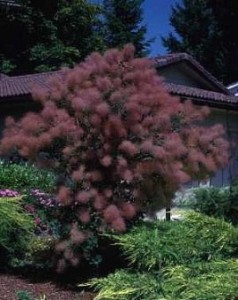
Purple Smoke Bush
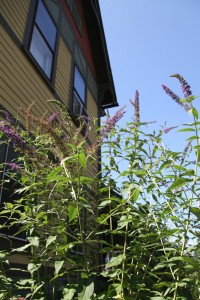
One of my 2 original Butterfly Bushes
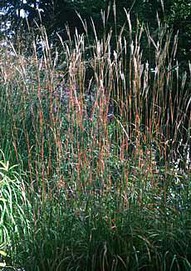
Ornamental Grass: Andropogon
Shrubs & Grasses
Fall is an excellent time to plant most shrubs. It gives them good moisture before winter sets in and by spring they are usually all ready to bloom. Plus at the end of the season you can often find them on sale.
2. Red Twig Variegated Dogwood: Excellent for part sun/part shade and it doesn’t mind soggy feet. It may get a little bit big for the bed, but I think it would be worth it. Offers multiple seasons of interest.
3. Purple Smoke Bush: This should do fine in part sun. You may need to prune it to keep it narrower. Can grow to be 10′ or more in height. Offers multiple seasons of interest.
4. Butterfly bush: These will grow quickly, and although it is known for full sun I have several that do just fine in part shade. In fact I have a couple sitting in a pot right now that I will bring over. Once these get big you need to cut them back in the fall or spring (to about 18″ or so), so they don’t get too spindly. The good thing is that their footprint is small. I recommend planting a part-shade plant underneath since its “feet” are not very attractive”. It will also attract lots of butterflies. It will offer blooms all summer.
5. Ornamental Grasses: There are a lot of grasses out there for sale in all different sizes. I would recommend a couple of variegated varieties. These would provide some nice texture and break up the length of the bed. I would stick to ones that are in the 3′ to 4′ height range. A couple of examples are Andropogon gerandii Big Bluestem, Turkey Foot or Achnatherum calamagrostis – Spear Grass, Needle Grass, Silver Spike Grass. These only require cutting back to the ground in the spring. You may want to wait until spring to plant these.
Heavenly Bamboo (Nandina domestica): Bamboo like leaves w/ beautiful red berries in the winter. Is okay in sun and shade.
Hydrangea: Another shrub that does best in part sun-part shade. It provides a long season of blooms in the summer, but looks a little sad in the winter. Only requires pruning when the size gets too big. There are also smaller versions available. I also like the “endless summer” version that blooms all season long.
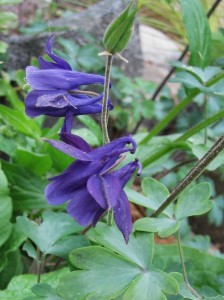
Purple Columbine
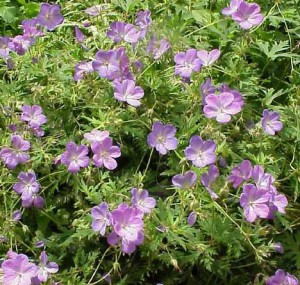
Cranesbill
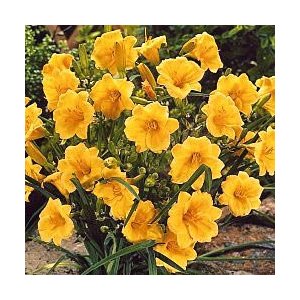
Stella De Oro Daylily

Shasta Daisy
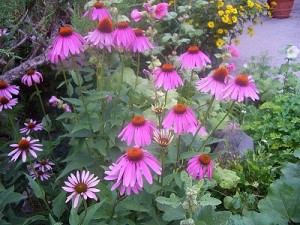
Coneflower or Echinacea
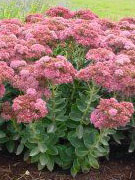
Autumn Joy Stonecrop
Perennials
I have divided the perennials into 2 categories. Ones that will have beautiful flowers and ones that are mostly there as a backdrop but provide a long season of texture. I have tried to give a list of plants that will do well in part sun to part shade. I recommend planting these in groups of 3 and 5 (except for some of the larger hosta which can be planted individually).
Flowering:
Columbine: For the spring time Colombine are some of my favorite. They are available in a ton of different colors. You can even grow these from seed quite easily. Depending on availability these may be easier to find in the spring.
Cranesbill (Hardy Geranium): These low growers have nice leaves and form nice mounds. The flowers also come in many pinks, purples and blues. This is another spring bloomer. These are good for the front of the boarder.
Daylilies (i.e. Stella d’Oro): These daylilies form grassy mounds when not flowering. Some varieties also rebloom. They also can be divided after just a couple of years giving you more to spread around. These bloom in early summer and often rebloom for the rest of the season.
Coneflowers and Shasta Daisies: Their preference is for full sun but I have some that do fine in part sun. These are good reliable summer bloomers.
Stonecrop (i.e. Autumn Joy): These workhorses are bulletproof and flower in the fall but their foliage looks good for the rest of the season. These are an excellent fill plant. These are also really easy to divide.
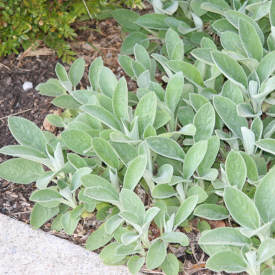
Lambs Ear
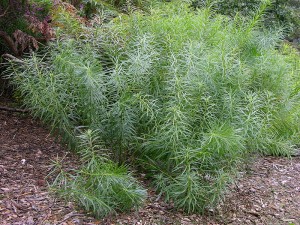
Amsonia
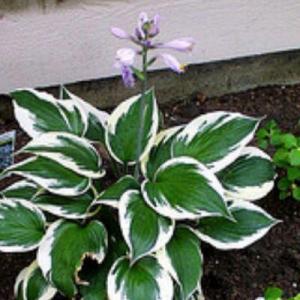
Hosta
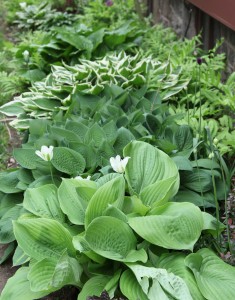
Hostas
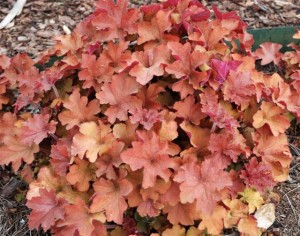
Coral Bells (Heuchera)
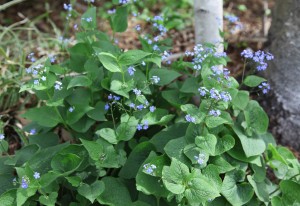
Brunnera
Foilage:
Lambs Ear (I prefer the “big ear” variety such as ‘Helene von Stein’): So soft and pretty. They just require a trim in the spring to clean them up.
Amsonia hubrichtii: Grows similar in size to a smaller grass and has lovely soft foilage. It also has blue flowers in early summer and turns yellowish orange in the fall.
Hosta: In shader spots or under larger shrubs in a sunnier bed these are great workhorses of the garden and come in a ton of variegated varieties. These are also another plant that you can divide after a short period of time. It is nice to get a mix of a couple of varieties with different leaf shapes and variegation.
Brunnera (false forget me knots):Â For shadier spots these plants have lovely blue flowers in the spring but they are best known for their hear shaped leaves that last for the rest of the season. These multiply quite well.
Coralbells (heuchera): I love these part-sun to part-shade plants. The leaves come in pretty red, caramel and green leaves. I have found good deals on these at Home Depot over the last couple of years.
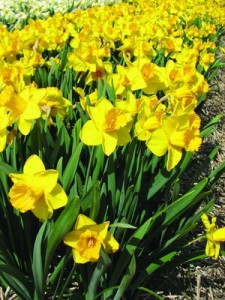
Daffodils
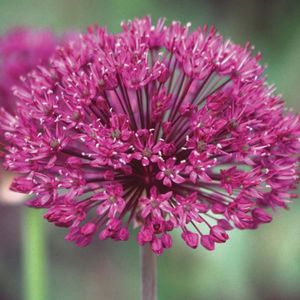
Allium Purple Sensation
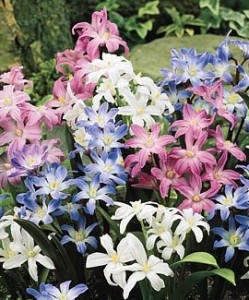
Chionodoxa
Bulbs
Daffodils: What can I say, easy to grow, pest resistant, doesn’t mind some shade. Ideally plant where the leaves can be hidden after they fade.
Allium (i.e. Purple Sensation for spring and sphaerocephalon for summer): These purple beauties are also pest resistant (they are a member of the onion family) and are nice and tall. They also look good as the seed head dry. Plants closer to the rear of the planting bed.
Chionodoxa (i.e. Forbesii): Low purple or blue flowers. Flowers in early spring. Plant large groupings in the front of the bed. Should pair well with the cranesbill.
